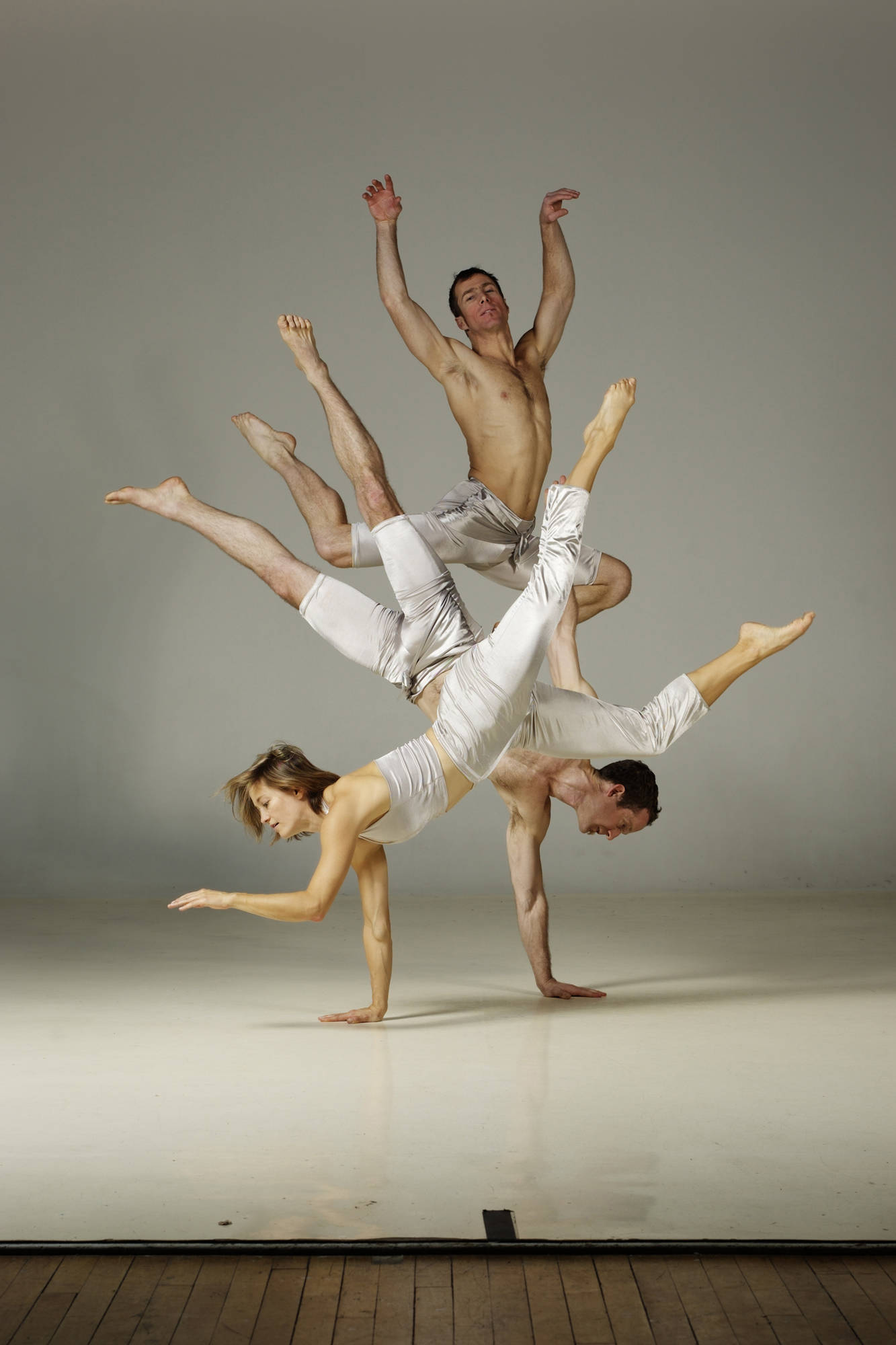If any artistic group survives for 21 years, it must be doing something right. Founded in 1997 and led by couple Jamie Hampton and Ashley Roland, dance and teaching group BodyVox has found a way to work that keeps them going.
“I guess we’re legit,” Hampton, 64, said in a phone interview. “We’re of legal drinking age as a dance company.”
BodyVox visits Homer next week for a performance at 7:30 p.m. Saturday, Nov. 3, at the Mariner Theatre. Tickets are $21 for Homer Council on the Arts members, $26 for general admission, $11 for children under 16, $54 for a HCOA family and $64 for a non-HCOA member family.
Also a teaching company, with a studio in Portland in a remodeled carriage house, in Homer the company will offer classes during its visit.
At 6 p.m. on Friday, Nov. 2 there will be classes for youth and Nutcracker performers. At 10 a.m. on Nov. 3 is a class for adults or youth ages 16 and older (or by special arrangement). Each 90-minute class is $20 per student. For more information or to register, visit www.homerart.org.
Hampton said BodyVox “found a way to work that was endlessly fascinating to us.” The group talked about why some companies survive and others fall apart, and decided it had to do with the battle of art vs. ego.
“If we devote ourselves to our art, if we realized we were in service to that and not the other way around, we won’t run into that ego ditch that others seem to run into,” he said.
Raised in Portland, Hampton went back east in 1972 to Dartmouth College, New Hampshire. He stayed back east and danced with Pilobolus. He met Roland and they formed another dance company, MOMIX. That led to a group, ISO, short for “I’m so confident.” In 1994 Hampton returned to Portland, with Roland following a short while later.
The couple formed BodyVox when ISO was asked to choreograph for the Portland Opera’s performance of Carl Orff’s “Carmina Burana.”
“Body Vox” means “body voice,” Hampton said, “because our body has a voice.”
In creating the “Carmina Burana” choreography, Hampton and Roland hired 10 highly trained classical dancers. They created movements that “straddled the classical world of opera with our own now unbridled imagination,” he said.
“We embarked on a whole different kind of movement vocabulary,” he said. “Our sensibility, but using more line and technical dancing that either Pilobolus or MOMIX has a penchant for. We uncovered a whole different way to move for ourselves. It was like legalizing a heretofore unavailable drug. It was an explosion for us.”
Hampton will stay behind in Portland with their children while Roland leads the tour to Alaska.
“You’ll see her. She’s extraordinary,” he said. “Her roles are pivotal to what’s happening on stage.”
BodyVox mixes a variety of comic with serious pieces. The show opens with a Roland piece, “Lexicon.”
“Lexicon is a language,” Hampton said. “… What she did was create a way of moving that looks different. It looks gravity defying in certain ways. Did they really just do that?”
Like Kansas City, Missouri, performance group Quixotic — the company that includes Homer-raised Mica Thomas, its executive producer — BodyVox features video and film in some pieces. “The Garden of Synesthesia” displays a live projection of the dancers so that there’s a plane that splits the stage.
“Dancers have spatial awareness,” Hampton said. “They know how much of their finger that is going through that plane. … The audience is watching this interesting amorphous dance and they’re watching the resultant that’s going on in the screen.”
Performances also integrate short films as bridges between numbers. Rather than slow the momentum of the show while dancers change costumes, the films take the audience on a “a little mini outing,” Hampton said.
Funny pieces include “Urban Meadow,” which imagines humans as animals.
“It’s very tender, funny, weird,” Hampton said. “…You can see the truth in human behavior by seeing it emulated.”
Another piece, “Cosmosis,” shows six people “as one mind and heart. It’s such a hopeful vision for humanity,” Hampton said. “I think that’s what we’re trying to be.”
At its Portland base, BodyVox holds classes every week attended by up to 400 people. It also does most of its performances in a 180-seat theater. The classes include a 25-person high school dance company.
“They’re serious kids, high level,” he said. “They work their butts off.”
The combination of performance and instruction helps BodyVox create a community, Hampton said
“I think it’s what sustains us. It’s the idea of creating a community that’s vibrant,” he said. “… I like having a company that has several different legs to the stool.”
To hone its edge, BodyVox also tours.
“There’s nothing that makes you dance better than going into a city, dancing in front of an audience, complete strangers, and putting your whole show up,” Hampton said. “…There’s nothing that makes you dance better than sense the effect you’re having on them. It’s the only road in my mind to mastery.”
BodyVox sometimes brings the audience into that community. Hampton said that at some shows, he asks the audience to keep their cell phones on. “Feel free to text your friends and tell them you’re enjoying a BodyVox show at this moment,” he said. “People laugh because it’s absurd.”
At one show, BodyVox even projected the numbers of the dancers so the audience could call them up and talk. After such a show, Hampton said he got a call a few hours later from an unknown number. It was a guy calling him up to say he’d saved Hampton’s number and called him to say how much he enjoyed the show.
Reach Michael Armstrong at marmstrong@homernews.com.


